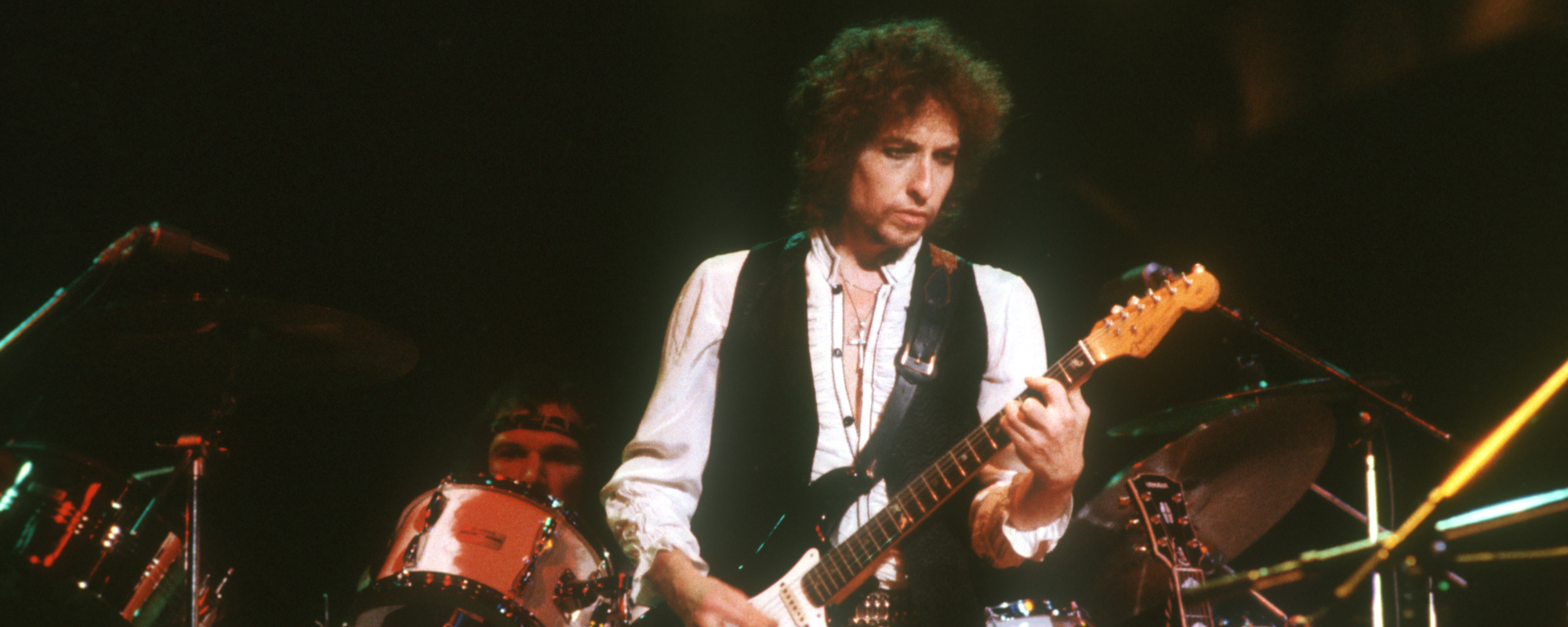Bob Dylan has been a groundbreaker in so many ways when it comes to doing things before any other musician dared try them. He was certainly at the forefront in terms of letting songs drift far beyond their “expected “necessary” length. While that might have kept some of his finest creations off the radio, it allowed his fans a richer listening experience. Dylan’s long songs can be reevaluated and rediscovered over and over again, as there are always tidbits that sneak up on you.
Videos by American Songwriter
Bob continues to love the long song, as evidenced by the nearly 17-minute runtime of “Murder Most Foul” from his 2020 album Rough and Rowdy Ways. It says a lot about his penchant for marathon songs that such a wondrous track didn’t even make it into our list. To be continued, perhaps. But for now, let’s see what did make the cut.
1. ”Highlands” (from the album Time Out of Mind, 1997)
Time Out of Mind might be the most monumental of Dylan’s comeback albums, a masterpiece released at a time when most had written him off for good. And “Highlands,” the closing track that clocks in at 16:32, helped to seal the deal.
Dylan borrows the refrain (My heart’s in the highlands) from the Scottish poet Robbie Burns, but it’s doubtful Burns could have imagined his line serving as the jumping-off point for such a ramshackle, yet compelling tale. It’s one of Dylan’s great lonely wanderer songs, and it’s as leisurely as it comes; for example, six verses are devoted to a quizzical conversation with a restaurant waitress. But it all adds up to a fascinating portrait, and there’s not a moment that feels wasted when all is said and done.
2. ”Brownsville Girl” (from the album Knocked Out Loaded, 1986)
Knocked Out Loaded isn’t an album that’s going to be listed by too many folks as one of Dylan’s finest. And yet, in the middle of a lot of so-so material on that record lies an 11-minute gem Dylan penned with actor and playwright Sam Shepard.
Like many Dylan epics, it’s driven by a narrator’s search for the one who got away. And’s it framed by his obsession with an old Gregory Peck film. Beyond that, it’s a series of random events and meetings in this guy’s life, all while he’s haunted by his past and trying to replace his ex with someone new. It’s got some of Dylan’s finest one-liners (I didn’t know whether to duck or run, so I ran) and a soulful chorus that, to borrow a phrase from the Bard himself, brings it all back home.
3. “Lily, Rosemary and the Jack of Hearts” (from the album Blood on the Tracks, 1975)
Most of Blood on the Tracks is devoted to romantic entanglements, as Dylan wrote many of the songs while dealing with problems in his marriage. Who knows what made him think to also include this story-song that seems like it’s set in some mythical Old West saloon town? But it fits perfectly, in large part because Dylan manages to draw thorough character sketches of the three title characters in the song’s nearly nine minutes of runtime.
[RELATED: Behind the Artist Name: Bob Dylan]
Just for good measure, Dylan manages to include a subplot that doesn’t make a lot of sense until a clever twist at the end. Very few people would have even attempted such an undertaking, let alone pulled it off like he did.
4. “Sad-Eyed Lady of the Lowlands” (from the album Blonde on Blonde, 1966)
After Blonde on Blonde, Dylan’s career course changed drastically, as he pulled back from the public eye following a motorcycle accident. Viewed through that lens, you can see “Sad-Eyed Lady of the Lowlands” as a hint of what was now important to him.
This massive 11-minute track was a tribute to his wife, Sara, and occupied the entire fourth side of the double album. Legend has it Dylan didn’t tell his session musicians how long the track was going to be, and then just kept adding verses as they stoically held the music together. It’s one of the most ambitious and monumental love songs in rock history.
5. “Desolation Row” (from the album Highway 61 Revisited, 1965)
Before you even get to the lyrics, you need to acknowledge the incredible instrumental performance put together by Dylan on acoustic guitar, Charlie McCoy on classical guitar, and Russ Savakus on upright bass. The trio creates an endlessly engaging foundation, onto which Dylan paints his surreal tableau.
All the historical names who pop up on this fascinating street are likely no more than misdirection by Dylan. What he’s really trying to describe is the chaos of modern life, which is somehow both terrifying and romantic. When he sums it all up with a harmonica solo, we, as listeners, are drained, exhilarated, and anxious to cue the whole thing up again.
Photo by Express Newspapers/Getty Images












Leave a Reply
Only members can comment. Become a member. Already a member? Log in.